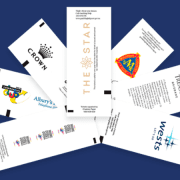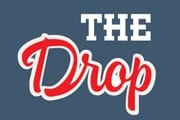SMALL FISH IN A BIG COMPETITIVE POND.
It can be difficult being a smaller club in an area where a large club dominates. While this is more common in metro areas, the same problem occurs in country towns. There are a few advantages to being a smaller club such as being more nimble with lower running costs when things change, as COVID has proved already over the last year. Additionally, being able to market to specific groups on a tight budget rather than spending money on “everyone”, keeping your gaming machine fleet up to date and having that spend be more obvious, and building a tight brand profile that says who you really are and profiles your strengths, are all great advantages to smaller venues.
So how can smaller clubs leverage their advantages?
How can you compete against a large club that has more staff, bigger marketing budgets, larger machine purchase budgets, and more facilities to offer members?
- Making a mark with machine purchases
In a large club it is hard for 2 or 3 new machines to be noticed. High machine numbers on a gaming floor requires a 10-20 machine very expensive capital purchase just to make a splash that attracts a players attention. In a smaller club, a few machines, positioned correctly, can be a much less expensive signal to your players that you have everything a large club can offer on a gaming floor. To make the most of your spend:
- Make sure you email opted in players that new machines are arriving before they are installed.
- Run a gaming promo to coincide with the addition of new machines, even if it’s just double/triple points for a few hours for the first week after the install. This can be on all machines, but make sure when marketing the games that players know it’s a celebration of the new machines arriving.
- Place the new machines in an obvious position and ensure staff members understand how the new games work so they can cross-promote them to players.
- Spread out your small machine purchases across the full year, negotiate a few conversions when you buy, and use the FOC warranty conversions on any machine purchase that drops below average. With a few new machines every couple of months and warranty game changes or conversions you can ensure machine activity throughout the whole year for a reasonably small capex outlay.
- Know Who You Are
Smaller venues understand who their main market is but often miss what differentiates them from their competitors. In a larger club their main target is “everybody”. In order to cover their high costs, high wage bill, large expenses and massive utilities costs, large clubs must get as many people as possible through their doors. For a smaller property just understanding the key market differentiators that set your venue apart can create a competitive advantage. To better understand your competitive advantage, you can query your customers using surveys, member and guest interactions, focus groups, competitive analysis, and your own observations. Once you understand your point of difference you can more easily manage your particular niche, such as:
The “Middle” Gamers Club – large venues need to focus heavily on attracting the larger gamers. As a result, a big punter at a large club is rewarded for their play, but the budget often doesn’t stretch too far down the tier levels. A player at the top of a low tier misses out in a big club just through the sheer number of members within each tier group, but in a smaller club they are probably in the top or mid-tier group of players. Make sure you can offer a comparative selection of more personalised “top tier” rewards to these players. They will see the advantage and be happy to continue at your venue where they are appreciated.
The Friendly Club – Small venues can get to know customers more directly with staff more easily able to have a chat, particularly with the regulars. This creates a welcoming experience with guests feeling at home. Often many regulars are at your club because a conversation with staff is the only face-to-face interaction with other humans they have in a day. While larger clubs do their best to replicate this friendliness, they have a hard time duplicating these small, comfortable interactions with members.
The Family Entertainment Club – As hospitality can be a numbers game, being the club that offers members lots of fun, entertaining low-end promotions, raffles, food and drink specials, and live music that are family focused can ensure high traffic at your venue. It is also true that often when food and families are the focus, gaming declines. However, if you’re a small club with very few machines this is a valid strategy to follow, particularly with lots of outdoor space that can be utilised for outdoor play areas, outdoor entertainers, weekend markets, and alfresco dining.
The Gaming Club – There are several clubs that just focus on gaming and offer the best gaming experience that they can keep their players happy and coming back frequently. Top shelf VIP style service, quality gaming area food items, appropriate personalised rewards, parking and privacy are all important to players.
- Sometimes its better to be a frigate than an aircraft carrier.
It’s always harder to turn an aircraft carrier around mid-battle so when things change, its often better to be a nimble frigate. COVID-19 proved this point. Mid-sized clubs were able to adjust and adapt much quicker once the industry reopened after lockdowns and rebuilt faster based on a restructured staffing model, closing down the club footprint to provide better service in smaller zones, having more targeted promotions after budget adjustments, and taking advantage of a “locals only market”. While we all field complaints when we try and change the time of the raffle, hearing it from 10 people in a smaller club is easier to deal with than hearing it from 200 in a larger venue.
- Making the most of social media
One efficient way to compete against larger clubs in the marketing arena is to keep up a relevant but regular stream of content marketing and guest interaction through social media, as well email marketing for members. As a smaller club is often seen as a “friendlier” club, local content in social media marketing campaigns can be seen as more personal and works very well. Nothing is more boring in social media than constant pictures of a steak, chicken schnitzel or hamburger meal, so make sure you follow the “give, give, take” rule when planning social media: give them the chefs best “impressing the mother-in-law” recipe, give them the surf report, and only then tell them about the two-for-one steak night.
To compete against larger clubs in your area make the most of your advantages by leveraging a story off your gaming machine changes, decide what you are best at and activate all your marketing around that brand strategy to own your market space and keep the AEMP costs within budget.
By Justine Channing – Cream Gaming & Strategy Specialist
Email: ">
© The Drop 2021 – Material may not be reproduced or distributed without the authors consent












